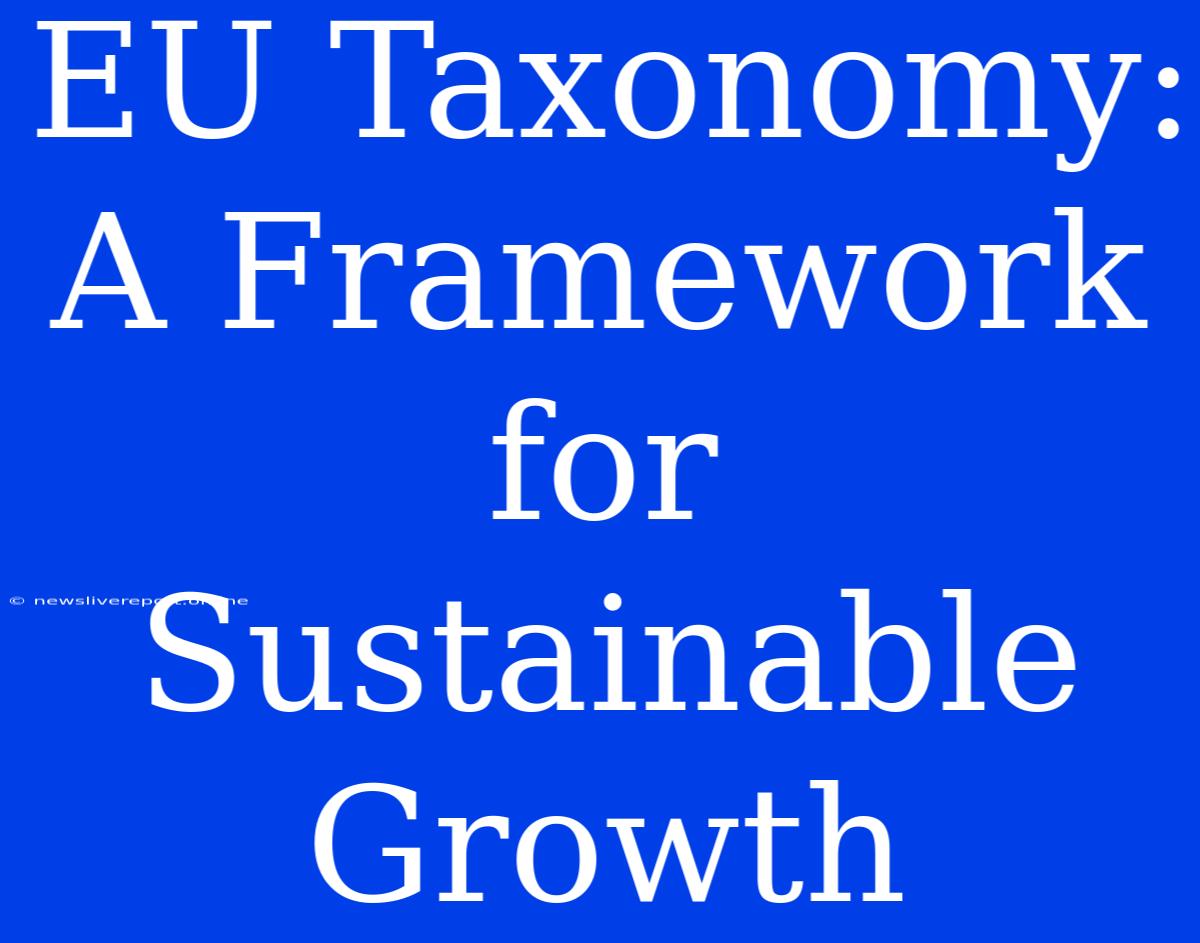EU Taxonomy: A Framework for Sustainable Growth
The European Union (EU) Taxonomy is a classification system designed to promote sustainable investment by providing a clear and robust definition of what constitutes environmentally sustainable economic activities. It aims to direct capital towards activities that contribute to the EU's green transition while avoiding greenwashing and enhancing transparency in the financial market.
Understanding the EU Taxonomy
The EU Taxonomy is built upon six environmental objectives:
- Climate Change Mitigation: Reducing greenhouse gas emissions.
- Climate Change Adaptation: Adapting to the impacts of climate change.
- Sustainable Use and Protection of Water and Marine Resources: Preserving and protecting water resources.
- Transition to a Circular Economy: Promoting resource efficiency and waste reduction.
- Pollution Prevention and Control: Reducing pollution from all sources.
- Protection and Restoration of Biodiversity and Ecosystems: Preserving and restoring biodiversity.
Key Features of the Taxonomy
- Clear and Objective Criteria: The Taxonomy provides specific criteria that economic activities must meet to qualify as environmentally sustainable.
- Scientifically-Based: The criteria are based on scientific evidence and best practices.
- Harmonized Approach: The Taxonomy provides a common framework for all EU member states, promoting consistency and transparency across the bloc.
- Transparency and Disclosure: Companies are required to report on the extent to which their activities align with the Taxonomy, increasing transparency for investors.
Benefits of the EU Taxonomy
The EU Taxonomy offers several benefits:
- Increased Investment in Sustainable Activities: By providing a clear and reliable framework, the Taxonomy encourages investors to direct their capital towards environmentally sustainable activities.
- Reduced Greenwashing: The Taxonomy helps to prevent greenwashing by setting clear and verifiable standards for sustainability.
- Enhanced Transparency and Disclosure: The Taxonomy promotes transparency by requiring companies to report on their sustainability performance.
- Alignment with Global Sustainability Goals: The EU Taxonomy is aligned with global sustainability goals, such as the Sustainable Development Goals (SDGs).
Implementation and Challenges
The EU Taxonomy is still under development and implementation. Some challenges remain, including:
- Complexity and Interpretation: The Taxonomy can be complex and require specific expertise to understand and apply.
- Data Collection and Reporting: Collecting and reporting accurate data on sustainability performance can be challenging for some companies.
- Harmonization with Other Sustainability Frameworks: Ensuring consistency with other sustainability frameworks is crucial for effective implementation.
Conclusion
The EU Taxonomy represents a significant step towards fostering sustainable investment and achieving the EU's green transition goals. By providing a clear and robust framework for sustainable economic activities, it encourages investors to direct capital towards activities that contribute to a more sustainable future. The Taxonomy is still evolving and faces challenges, but it has the potential to drive a fundamental shift in investment practices and contribute to a more sustainable and prosperous Europe.

